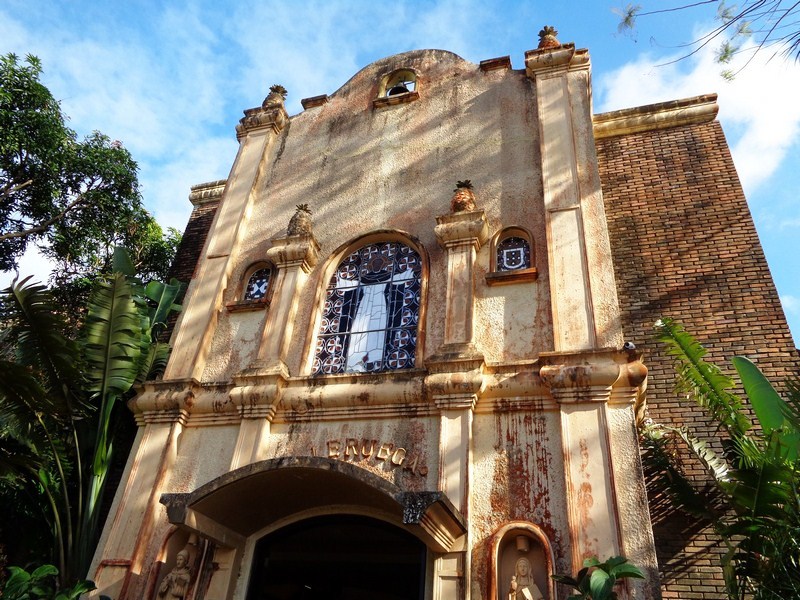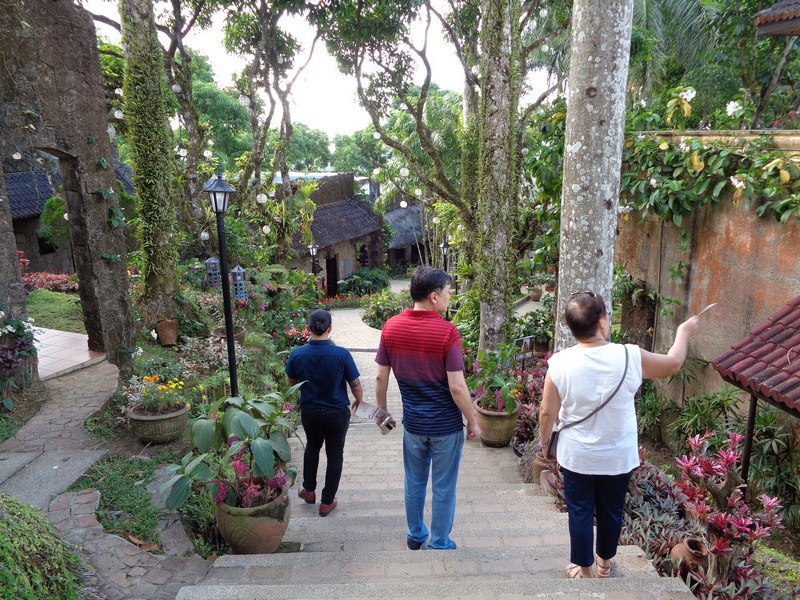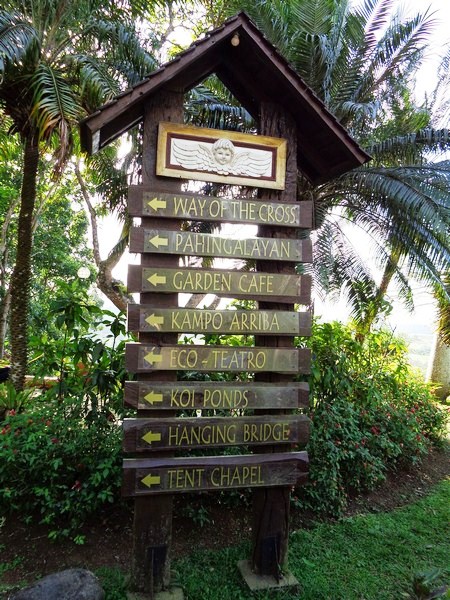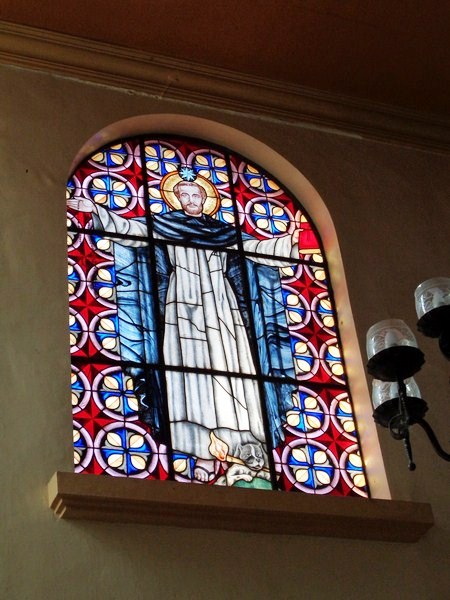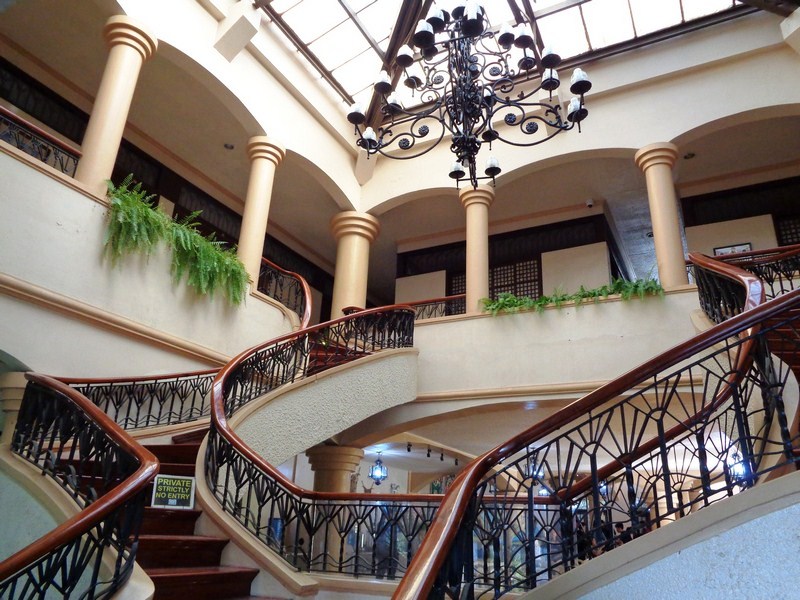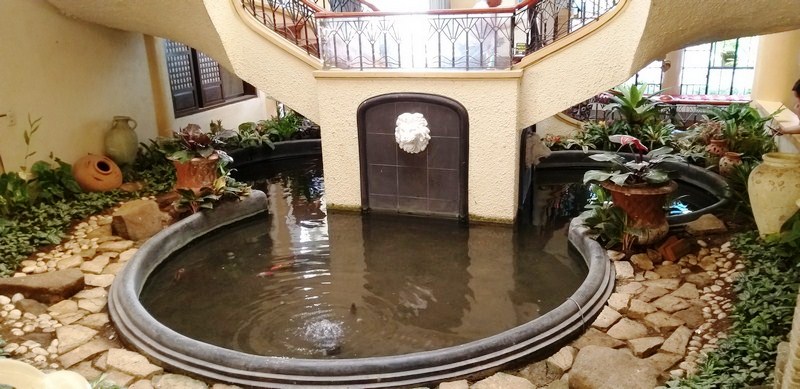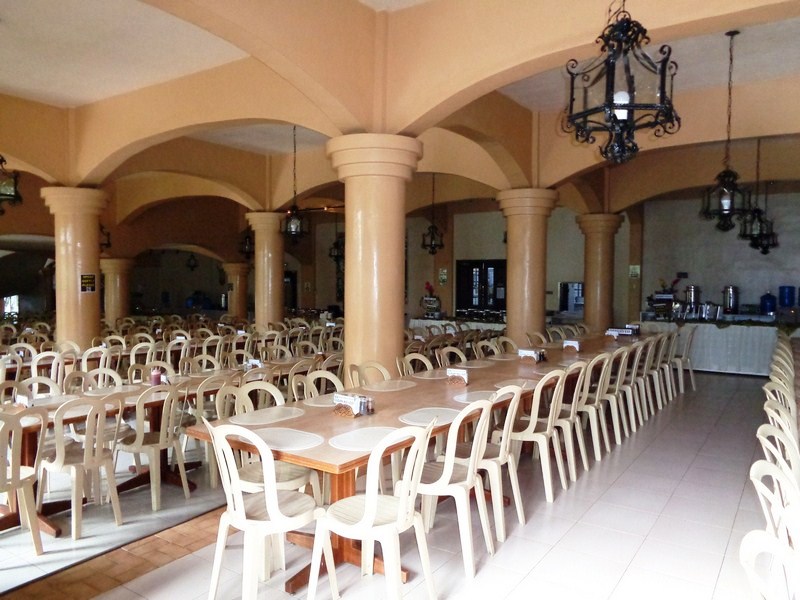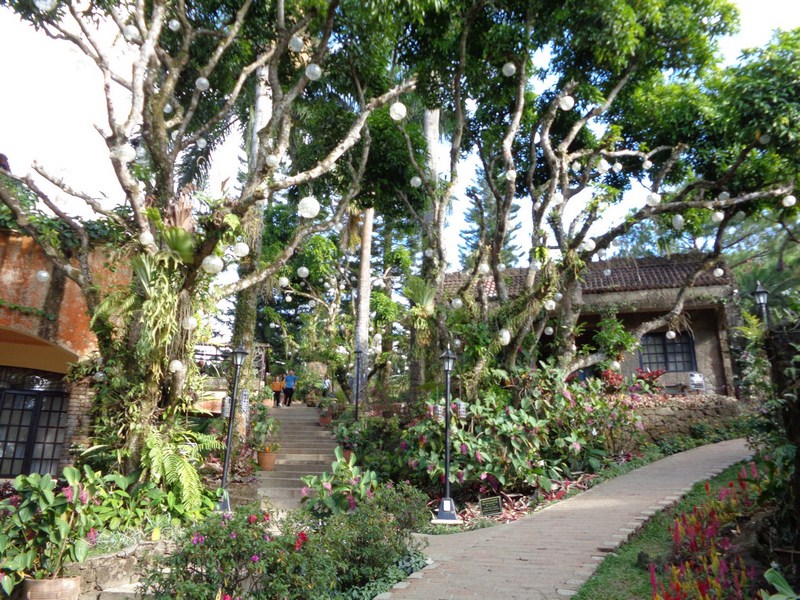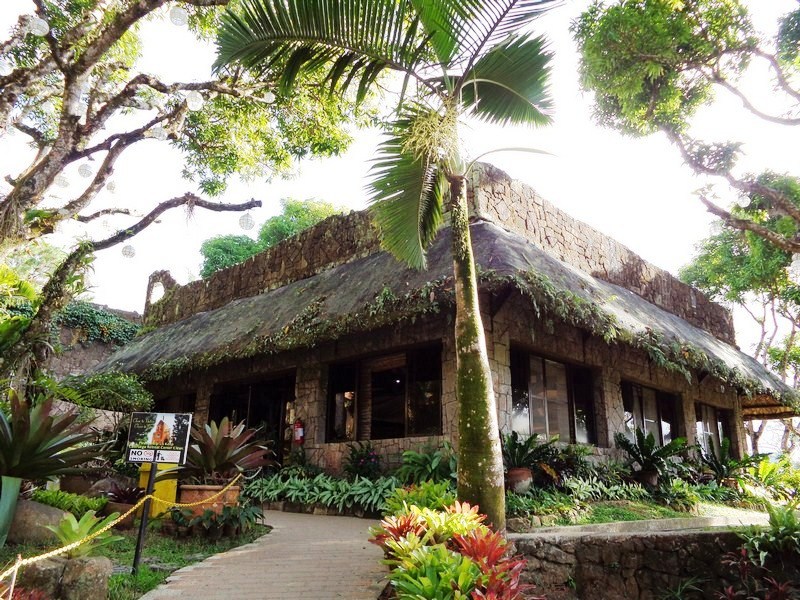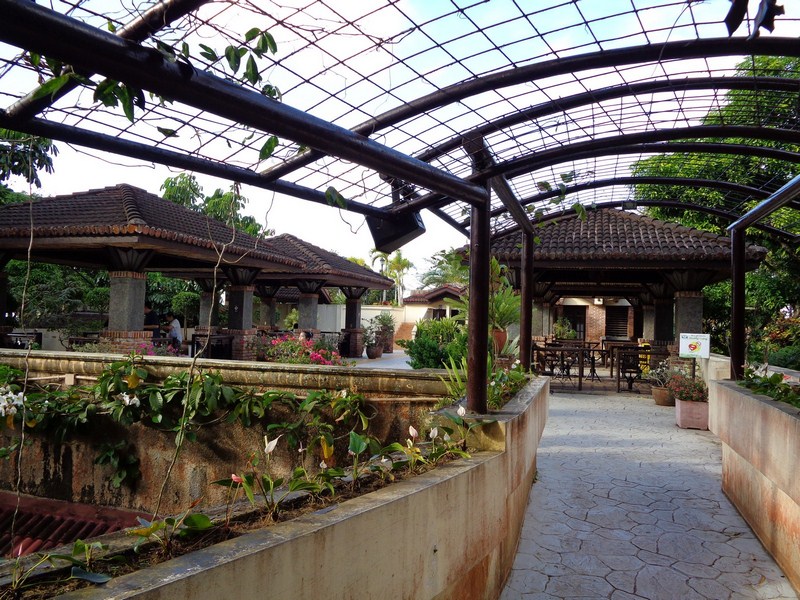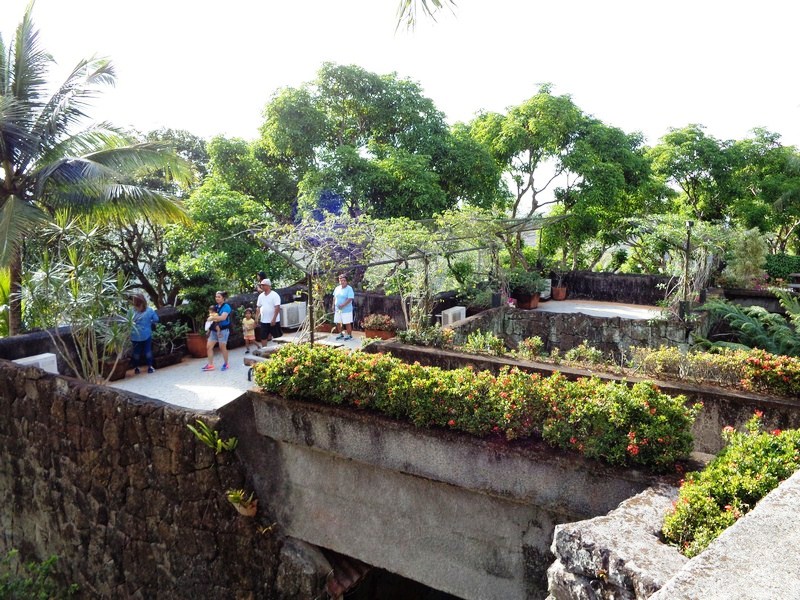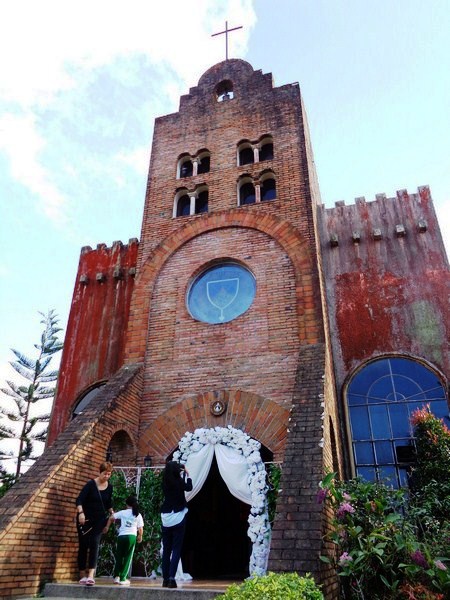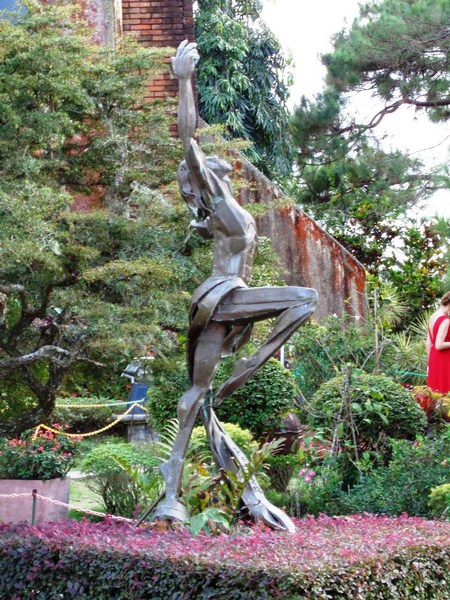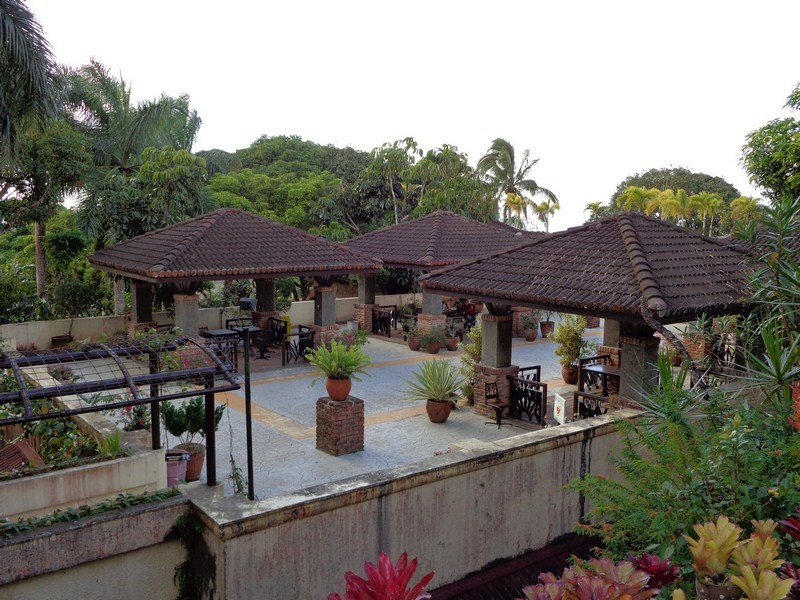After a filling lunch at Josephine’s Restaurant in Tagaytay City, Mark, Jandy, Vicky, Marc, Bryan and I opted to go on a sightseeing trip. Back on Mark’s Starex van, we traveled a further 15.7 kms. (25 mins.) to the town of Nasugbu, in the adjoining province of Batangas, where we were to visit the much hyped up retreat center and wedding venue called Caleruega. Designed by Arch. Yolanda D. Reyes (Dean of UST’s College of Architecture) and built in 1995, Caleruega was set up as a venue for retreats and seminars of the Dominican institutions.
The much-publicized wedding of Christopher de Leon and Sandy Andolong gave Caleruega its early exposure and, today, it is a lovely setting for an out of town wedding for brides and grooms. Even movies and television ads producers have taken notice.
From the highway, we turned into of a long, rough, bumpy and isolated road, at the end of which is the sprawling, 8-hectare property owned by the Dominican Fathers. We parked our van just outside. Past brick-paved rotunda and fountain is the Dominicum (which we mistook to be a chapel), the receiving hall for visitors and those having their retreats at the place.
Perched atop an elevation with a 21 steps leading up to it, its two level Moorish and Spanish-style facade has a segmental arched main entrance flanked by square pilasters and niches with statues of Thomas Aquinas and Catherine of Sienna, both doctors of the church, at the ground level.
The main entrance is topped, at the second level, by a semicircular arched window with the stained glass image of St. Dominic, founder of the Dominican order. This window is flanked by smaller semicircular arched windows with stained glass images of his father’s coat-of-arms on the left and his mother’s coat-of-arms on the right.
The four square pilasters (two reaching up to the pediment) are topped by pineapple (probably hinting at its proximity to Tagaytay)-shaped finials. The undulating pediment has a bell-gable (espadana) at the center.
Inside is a grand, elegantly curving staircase (unfortunately, off limits to visitors), a gift house (where one can buy souvenir shirts, trinkets and religious items) on the left, a mess hall on the right and a corridor that leads to the gardens.
From the Dominicum, pathways, following the natural curves and slope of the hill, lead us into a garden bursting with color and life. It was easy to fall in love with the serenity and beauty of this gorgeous retreat sanctuary with its abundant and colorful varieties of flowers, lush plants and trees and walking paths.
In the comforting company of nature, one can sit on solitary park benches, found in niches, and gaze at the 180-degree view of cobalt-blue skies, the rolling, verdant hills and mountains and the plains. Caleruega’s tag line, “Closer to Nature, Closer to God,” is a fitting description of this nourishing sanctuary.
Lining the pathway are functional dormitories, cottages and overnight guests plus an interesting gazekubo, a conference hall that mixes the elements of a gazebo and a bahay kubo, with adobe stone walls roof made with once brown pawid (now green with small plant growth).
The many signs and symbols of the Dominicans were abundantly integrated into the architecture. The motif of the Dominican star (Joanna of Aza, St. Dominic’s mother, saw a star on her son’s forehead, a sign that he would eventually spread light to the world), as well as the sun, can be consistently seen in the refreshing fountain on the driveway, capiz windows, grilles and even inside cottages in the retreat center.
There were also viewing decks where one can witness the stunning show and the magical moment of the sun setting between the two rugged peaks of Batulao (incidentally, the name Batulao is derived from the words bato, meaning “stone,” and “ilaw or “light”), creating the perfect mood for love. St. Dominic’s Point, another beautiful vantage point, has a statue of St. Dominic, his feet lined with a star formation of fuchsia plants. Rosary Lane, framed by the rolling hills of Mt. Batulao, has a statue of the Mother and Child sitting in prayer, each clutching a rosary.
At the peak was the famed, stunning and quaint Transfiguration Chapel with its Moorish-style facade done in red brick and painted concrete. When we arrived, a wedding was ongoing inside the chapel. Patterned after the original Caleruega Chapel in Spain, it can fit only 150 people. Its door has a brass sculpture of seven grapevines (symbolizing the Seven Sacraments).
The chapel’s interior, finished with varnished wood and painted concrete, has a lectern with Biblical images of the mustard seed while the tabernacle has a burning bush design. The altar, made from a carved tree trunk, signifies the Stem of Jesse in the Book of Isaiah. The birds, at the communion table, symbolize God’s providence.

The chapel interior with its centerpiece stained glass window featuring the Transfiguration – Moses on the left, Jesus at center and the prophet Elijah at the right
The stained glass windows of the chapel, giving a very soft and warm glow to the interior (an atmosphere conducive for prayers and reflections), were impressive. On the facade is the seal of the Dominican Province of the Philippines. Inside is the centerpiece of the church floor to ceiling stained glass of the figures of Transfiguration (Jesus, Moses and Elijah).
In front of the chapel is “Thy Will Be Done,” a metal sculpture with arms outstretched done by Baguio City artist Benhur Villanueva. Surrounding the chapel are carefully selected plants and trees (the planted pine trees even mimic the Mediterranean setting where St. Dominic was born in 1170 in Caleruega in Old Castile).
Caleruega is a lovely, quiet and soothing addition to the 39 Catholic houses (retreat houses, formation houses, seminaries and contemplative groups) tucked along Tagaytay Ridge as well as over a dozen Christian lay communities and prayer houses.
Caleruega Retreat Center: Bgry. Kaylaway, Batulao, Nasugbu, Batangas. Mobile number: (0921) 270-9890 and (0921) 830-4226. E-mail: caleruega_philippines@yahoo.com. Open daily, 8 AM – 12 noon and 1 – 5 PM. A mass is held every Sunday at 11 AM.
How to Get There:
Coming from Tagaytay City, board a Nasugbu bound bus and ask the driver to drop you off at Evercrest where there’s a tricycle station. Here, you can hire a tricycle for a two-way trip to Caleruega.

